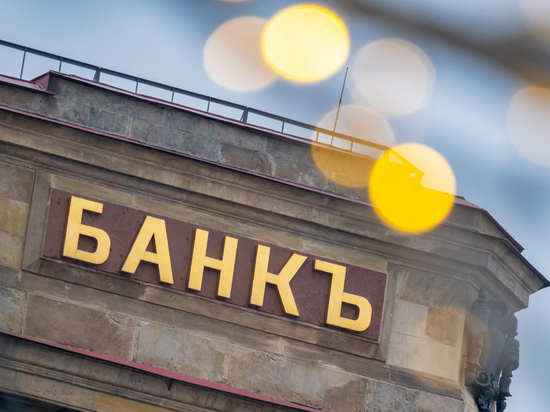The population and banks began to lose interest in loans
In February, the issuance of consumer loans was 12.3% lower than in February 2022. The average check for issuing loans also decreased. Only one parameter has grown — the size of the delay. What are the reasons for such trends, whether it can be considered a sign of an approaching crisis or a boon, MK found out from experts.

According to the Scoring Bureau, one of the three largest credit history bureaus (CHBs) in Russia, almost 2.4 million consumer loans (excluding card loans) were issued in February for the amount of 431.8 billion rubles. In monetary terms, it turned out to be 12.3% less than in the same month last year. At the same time, the usual “February rebound” in lending after the decline in January did not occur: in the last month of winter, only 1.7% more loans were issued than in the first month of the year, which can be considered a very subtle increase, close to the statistical error.< /p>
Stagnating, as if rested on an invisible border, and the average consumer loan check. In February, its size was at the level of 183 thousand rubles. For comparison, in December 2022 it was equal to almost 189 thousand rubles, and in January it was just over 176 thousand rubles. At the same time, in February 2022, this figure was noticeably higher and amounted to 240 thousand rubles.
At the same time, overdue debt over 90 days reached 712 billion rubles, having increased by 6.6% since the beginning of the year. The average size of an overdue consumer loan in February reached a maximum since 2021 — almost 146 thousand rubles. For comparison: according to the results of February last year, the figure was 9% less and amounted to 132.5 thousand rubles. The decline in the interest of banks in issuing loans in such conditions can be explained by fears of their non-repayment. A year-on-year decrease in the average issue check against the background of an increase in the average size of overdue consumer loans leads to the conclusion that the delay is growing faster on large loans, so banks are already striving to issue smaller loans to Russians.
But what caused the decline in citizens' interest in loans against the backdrop of a slowdown in price growth? According to Rosstat, in February, inflation was almost 11%, which is 1% less than in the whole of 2022. In addition, the Bank of Russia argued that «faith in the best» among compatriots has recently increased. Thus, according to the regulator, inflation expectations in the first decade of March fell to 10.7% from 12.2% in February. If you remember that, according to a HeadHunter study, almost two-thirds (60%) of employers planned to increase the salaries of their employees this year, the question of why Russians have lost interest in loans becomes even more confusing.
The experts disagreed. Some say that no matter how the external economic situation improves, compatriots continue to live in a regime of high uncertainty, and there is no time for loans. “The decline in inflation at the beginning of 2023 shows a slowdown in consumer activity in the economy,” says Artem Tuzov, Director of the Corporate Finance Department at IVA Partners Investment Company. — It is difficult for citizens to plan for the future, which means that it is not easy to take consumer, unsecured loans. Therefore, not only the bankers raised their demands, but also the consumers lowered the demand.”
The increase in delays in the segment of consumer loans is caused by a combination of factors — this is the loss of work by borrowers due to sanctions and the withdrawal of foreign companies from Russia, and the departure of some compatriots abroad, and the state’s attempt to “forget” about the loans of mobilized citizens, shifting all responsibility to banks with the obligation to provide them reprieve. Loans often have guarantors who are not subject to mobilization, while they cannot pay a consumer loan in the absence of a breadwinner, the expert believes. At the same time, Tuzov is inclined to interpret the very fact of a decrease in lending as a blessing. In his opinion, the popularization of unsecured loans among the population harms the well-being of households.
But the bankers have a completely different view of the problem: in their opinion, it's all about regulation. As Maxim Osadchiy, head of the analytical department at BKF-Bank, recalled, from the first quarter of 2023, for all banks with a universal license and microfinance organizations (MFIs), the Central Bank of the Russian Federation introduced a new mechanism — macroprudential limits (MPL), which limit the issuance of loans. The lender cannot issue certain types of loans in excess of this limit. “This measure is designed to cool the credit market,” the expert explained. “It helps to reduce the volume of consumer loans.” Another important reason for the cooling of the market is the growth of rates. So, if in the fourth quarter of 2021 the average rates on unsecured consumer loans amounted to 15.4% per annum, then in the same quarter of 2022 they increased to 20.6%.
But about the impact of mobilization on credit market experts agreed. “The activity of banks in the consumer loan market may also decrease due to the adoption in October of a law according to which mobilized Russians and their families can receive credit holidays,” Osadchy said. In addition, the law provides for the complete cancellation of debt if a serviceman died or received a disability of group I during the SVO, the expert noted, explaining that all this affects the interest in lending on the part of financial organizations.

